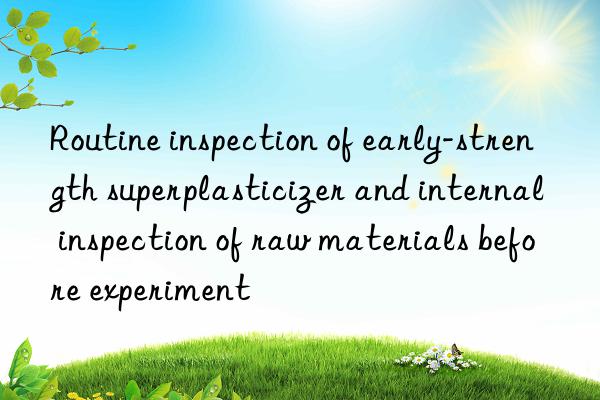
According to professionals: In actual industry, routine testing of early-strength water-reducing agents is required, mainly including: solid content, density, fineness, PH value, surface tension, chloride ion content, sulfate ion content, reducing sugar content, cement paste fluidity, and concrete workability.
On-site inspection: pH value, density (or fineness), concrete water reduction rate, and adaptability to cement.
Factory inspection: solid content, pH value, surface tension, chloride ion content, total alkali content, reducing sugar content, cement paste (or cement mortar) fluidity,
For reduction For water-reducing agents, it is more important to detect the water-reducing rate of concrete and the solid content of the water-reducing agent. Guanya WL-01 is a special rapid tester for solid content and a simultaneous moisture content detector. It operates fully automatically in a few minutes and calculates automatically. .
The raw material control of commercial concrete production units is an important part of the entire quality control. The inspection of raw materials entering the factory is a key step and can be arranged according to the actual situation. Here is some analysis based on your own situation:
1. When the sand and gravel enter the factory, they will first be visually inspected by the receiving staff (such as receiving materials) If the operator does not meet the conditions, the tester can provide guidance). If there is any doubt about the quality, the tester can be notified to conduct sampling and testing. Only those who pass the test can enter the sand and gravel yard. Under normal circumstances, the laboratory must conduct batch tests according to the daily purchase volume and standards. The routine test items include: sand routine: particle gradation, fineness modulus, mud content, mud content; stone routine: particle gradation, content Mud amount, mud lump content, needle flake shape.
2. The quality of cement and cement is very important, so batches must be grouped according to standards every day and for each batch number entering the factory. P.O42.5 Cement General: mortar strength, standard consistency water consumption, coagulation time, stability.
3. Commonly used admixtures include ore powder and fly ash. After entering the factory for sampling, the ore powder is first subjected to a specific surface area test, and the fly ash is first subjected to a fineness test. Only after the test results are qualified can Admission. Other conventional items: Ore powder: activity index test, mortar fluidity ratio; fly ash: water demand ratio, loss on ignition, stability.
4. Admixtures: Commonly used admixtures include high-efficiency water reducing agents, pumping agents, etc. Routine tests: Pumping agent routines: PH value, density or fineness, slump increase and loss values; Water reducing agent routines: PH value, density or fineness, water reduction rate. 1 Inspection of the standard consistency of cement slurry
Key instruments and equipment for the experiment: small mixer for experiment, standard consistency and setting time tester, round mold for cement slurry (made of non-absorbent material, round The inner diameter of the upper mold opening is 65±5mm, the inner diameter of the lower opening is 75±5mm, the height is 40±0.5mm), the spherical bowl (the upper opening diameter is 400mm, the height is 100mm, the wall thickness is 2-3mm), and the stirring shovel (1mm steel plate, blade diameter 100mm)
2. Inspection of coagulation time-----initial coagulation and final coagulation
Key experimental instruments and equipment: use 2.1 instrument measurement and replace the test needle and curing box
p>3 Inspection of cement volume stability
Key experimental instruments and equipment: boiling box, pure slurry made of standard consistency, curing box
4 Cement medium three Inspection of sulfur oxide
Key experimental instruments and equipment: ammonium hydroxide (specific gravity 0.90) 1:2 solution, hydrochloric acid (specific gravity 1.19), 10% barium chloride, 5% silver nitrate, analytical balance, evaporation Dish, distilled water, qualitative filter paper, magnetic crucible, constant temperature pot
5 Test of free calcium oxide
Key experimental instruments and equipment: round bottom flask, rubber stopper, 99.5% alcohol, reflux Condenser, drying tube (calcium chloride), small mouth bottle, 0.01N sodium hydroxide anhydrous alcohol solution, anhydrous glycerin, thermostatic pot, 0.1N benzoic acid, dryer (sulfuric acid), electric stove, Erlenmeyer flask, 1% Phenolphthalein anhydrous alcohol solution, barium chloride, oven, porcelain mortar, paraffin. </p



 微信扫一扫打赏
微信扫一扫打赏
